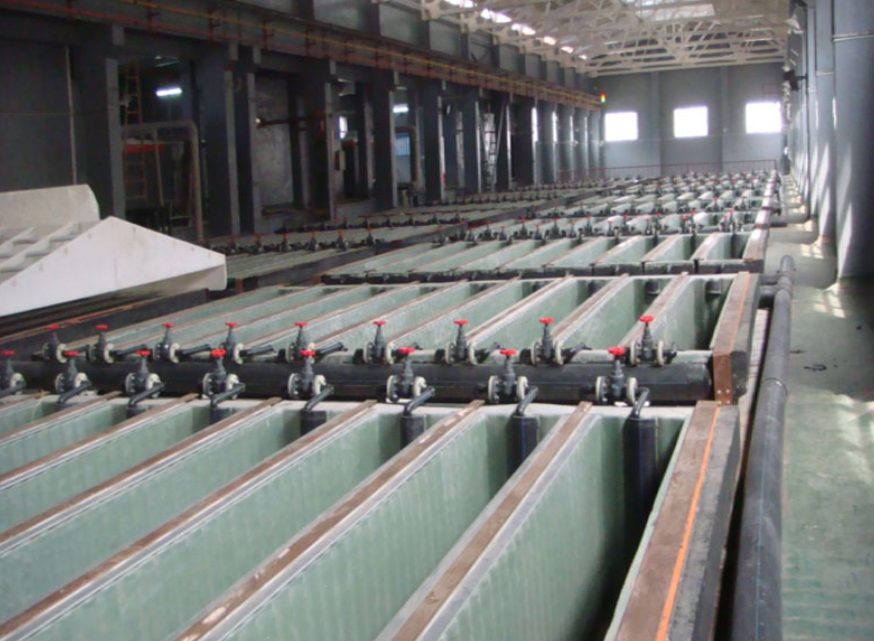NEWS&EVENTS
Home > News&Events > Company news > How to treat electrolytic wastewater in hydrometallurgy of antimony
In the process of wet antimony refining, antimony electrolysis equipment is a crucial link. It undertakes the key task of precipitating antimony in the antimony-containing solution in the form of metal. In the electrolysis process, electrolytic waste liquid will be produced. The treatment of these waste liquids is crucial and directly related to production efficiency and environmental protection requirements.

Electrolytic waste liquid is mainly divided into anode liquid and cathode liquid, which need to be treated separately. For the anode liquid, it contains components such as Na₂S. Since Na₂S has important uses in subsequent production links, part of the waste liquid needs to be extracted from the anode liquid and sent to a special purification treatment device. After a series of purification operations, Na₂S is regenerated, and the regenerated Na₂S will return to the leaching process again to achieve resource recycling and reduce production costs.
The composition of the cathode liquid is more complex, including Sb, NaOH, Na₂S and other substances. For the treatment of cathode liquid, after purification, some of the waste liquid will be added with a certain amount of NaOH solution, and the composition will be adjusted before it is put back into use as anode liquid, which not only reduces the discharge of waste liquid, but also optimizes the material balance of the electrolysis process. Another part of the cathode liquid will be sent for reduction treatment to further extract valuable substances.
In addition, during the electrolysis process, substances such as Na₂SO₄ and Na₂CO₃ will gradually accumulate. When these substances accumulate too much, they will have an adverse effect on the electrolytic deposition process, resulting in problems such as reduced electrolysis efficiency and reduced product quality. Therefore, it is necessary to regularly treat Na₂SO₄ and Na₂CO₃ in the electrolysis system, or return them to the leaching process to maintain the stable operation of the electrolysis process. Under the stable operation of antimony electrolysis equipment, the reasonable treatment of these electrolytic waste liquids is the key to ensuring efficient and environmentally friendly production of hydrometallurgical antimony.